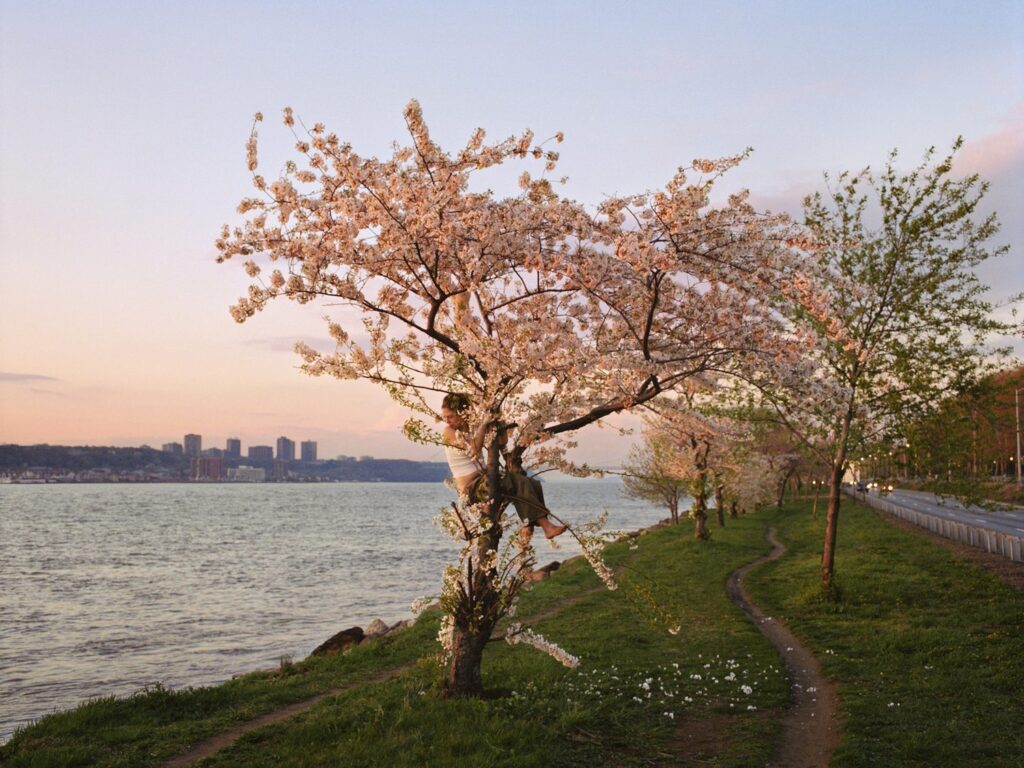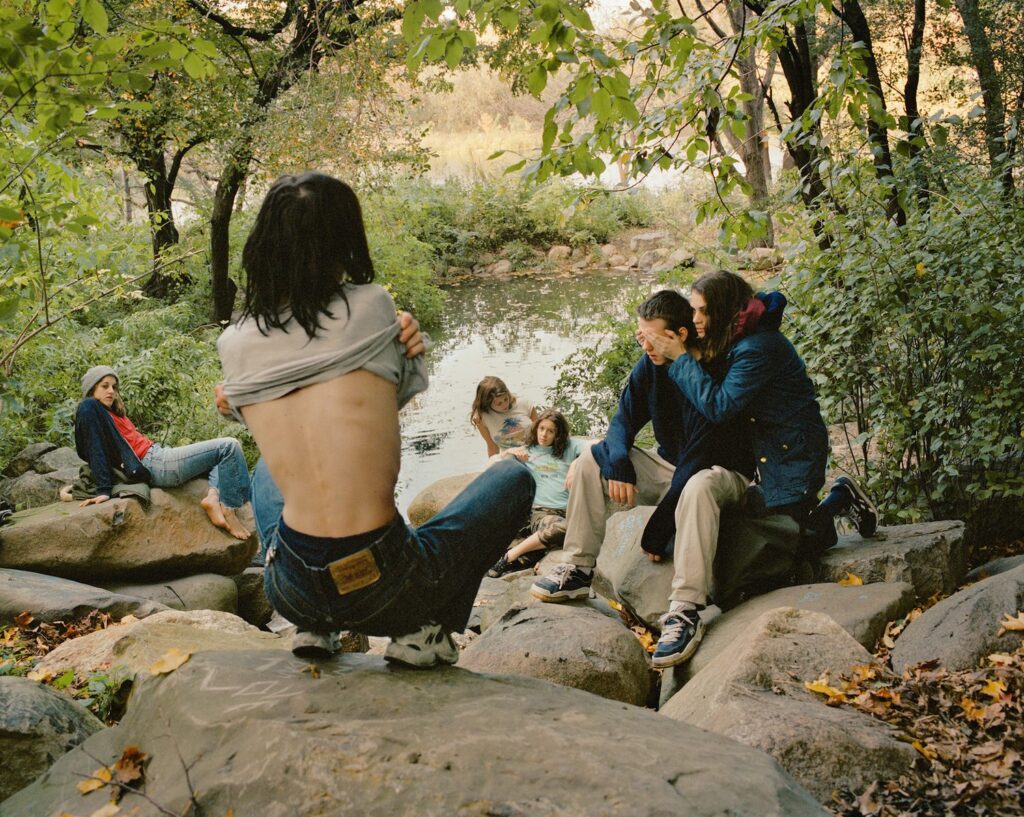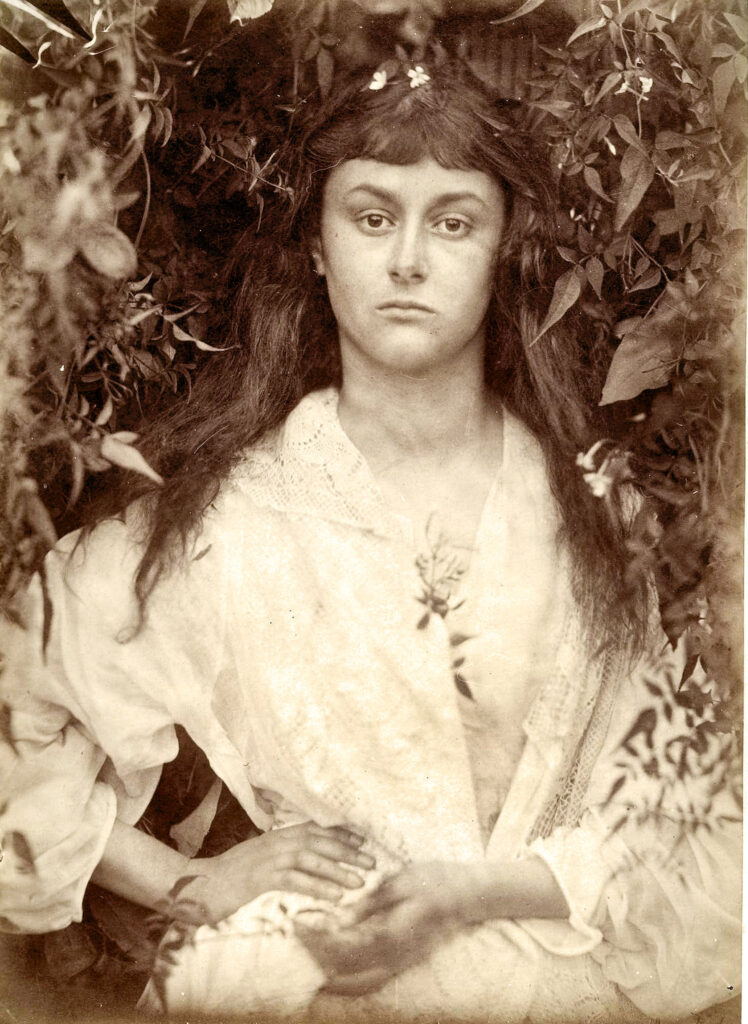‘Photographed images do not seem to be statements about the world so much as pieces of it, miniatures of reality that anyone can make or acquire.’
-Susan Sontag- On Photography
Girlhood is an idea that has material effects on how childhood is understood and lived, how gender is created and experienced and how identities are constructed. These are all related to the idea of a ‘girl’ which will never fully be achievable as that varies in many ways, more then ever in nowadays society. From the 1640s, “girl” could also mean “sweetheart.” Usually we would relate that word to romance and love; this suggests girls are affectionate. We often think of age as a key determinant of girlhood, immediately relating the word to childhood however, this alone is more complicated. Does girlhood end with adolescence? Defining girlhood is so challenging, it is a social and cultural construct, suggesting that different societies often construct their own unique meaning of girlhood. I think that is what makes it so wholesome.
I have chosen this area of research because I want to project and represent with photographs my childhood and what it was like for myself growing up as a girl. Girlhood is about learning and growth, self-discovery, finding who you are and showing other people that; this is why I want to capture images that express these emotions.
Justine Kurland and Julia Margaret Cameron both present girlhood in their work, however, in very significant ways. Kurland’s being in a soft, fairy-tale- like way of runaways being free through environmental, landscape images; and Cameron’s is presenting original, powerful women through close-up portraits. In this essay I intend to create an understanding of Justine Kurland work from her book ‘Girl pictures’ and Julia Margaret Cameron’s work from her book ‘ Julia Margaret Cameron’s women’ and compare the way they present girlhood.

Justine Kurland’s most successful project, ‘Girl Pictures’ book is an enduring symbol of romance, rebellion escape and freedom. It captures pictures of teenage girls taken between 1997 and 2002 on the road in the American wilderness. Kurland said she “staged the girls as a standing army of teenaged runaways in resistance to patriarchal ideals,”. She portrays the girls as fierce, free fearless and compassionate.
‘Every teenager is a teenager pretending to be a teenager.’
Kurland was born is Warsaw, New York in 1969. Her parents weren’t around so Kurland and her sister lived a somewhat nomadic lifestyle. Only at the age of 15, Kurland ran away to Manhattan to live with her sympathetic Aunt , and decided to focus on becoming an artist. From there, she graduated from The School of Visual Arts in New York with a BFA in 1996. She received her MFA in 1998 from Yale University in Connecticut. Now she has become famous for her landscapes dealing with young, feral unsupervised adolescents in suburban wasteland settings. Often mixing the purity of youth with its unbridled wilderness, Kurland has travelled across the united states to photograph these staged images.
Justine Kurland created ‘Girl pictures’ based on her own childhood experiences, her images almost foreshadow herself; she uses both childhood adventures and current experiences to influence her working style and subject matter. She channelled the angry energy of girl bands into her photographs of teenagers. The first girl Kurland ever photographed was the daughter (age 15) of the guy she was dating at the time. She preferred her company to his. After he left for work in the mornings, they conceived a plan to shoot film stills starring the girl as a teenage runaway. The only surviving picture from the time shows her in a cherry tree by the westside highway:

She hovers pinkly between the river and the highway, two modes of travel that share a single vanishing point; portraying the flowing theme of fleeting moments of adolescence and its fearless protagonists in her work.



Kurland’s surreal images evoke pagan utopias or post-apocalyptic worlds. Her work is fairly modern to nowadays, based in the 2000s. The girls in their baggy jeans and bare feet. The girls in their leather boots and used sweaters. There’s something about them that feels like so many teenage girls. Personally there is an aura in this book of Kurland’s that feels relatable and nostalgic to my own childhood.

The theme of girlhood throughout Kurland’s work is obvious, however, I have decided to choose these two specific images from ‘Girl pictures’ to analyse. As I spoke about a the start of this essay, we often use age to determine the meaning of girlhood, immediately relating it to childhood; although, I personally believe girlhood is an idea that can be with you forever. These two images infer that perfectly. The image on the left displays three young girls, they appear to be playing in what looks like their garden if not then a rural environment. As a young child it is always exciting to be free to adventure wherever you want. You have imaginary tasks and make up games with your friends, no rules jut fun. Kurland has captured this image of them playing in the flowers and nature having no cares. On the other hand, the image on the right shows three older teenage girls also sat in a field, eating ice cream. The image almost foreshadows the one on the left, implying that the younger girls will still be able to have that sense of girlhood in older years of their life. I can analyse this from these images as in the image on the right, there is cars and a petrol station, an environment that you wouldn’t find young children on their own, in the background; I can guess they have stopped off on a road trip ( again, suggesting these girls are runaways). In the image on the left the girls are purely in an open field, a safer setting for younger children. Kurland has taken these images strategically.

Taking themes from the Bible, mythology, literature, and Renaissance painting, Cameron modelled the women around her–friends, servants, relatives–as Ophelia, Juliet, Queen Esther, Rachel, A Bacchante, Guinevere, and Mary, among others.
Julia Margaret Cameron was born in Calcutta in 1815 to a wealthy British family and she was educated in France and England. She is considered one of the most important portraitists of the 19th century and is known for her soft-focus close-ups of famous Victorian women, for illustrative images depicting characters from mythology, Christianity, and literature. Cameron helped prove that portrait photography was indeed a veritable fine art medium in a context where photography was not yet widely accepted as such.
After showing a keen interest in photography for many years, Cameron took up the practise at the relatively late age of 48, after her daughter got her a camera as a present. She quickly produced a large body of work capturing the genius, beauty, and innocence of the women and children who visited her studio at Freshwater. When Julia Margaret Cameron began taking pictures in the 1860s, photography was largely defined by formal commercial studio portraits, elaborate high art narratives, or clinical scientific or documentary renderings. Cameron, on the other hand, forged her own path as a thoughtful and experimental portrait artist who happened to use a camera instead of paint.
As by the time Cameron got her first camera, all her children were grown-up and her husband was often away on business. From that moment on, Cameron dedicated herself to mastering the difficult tasks of processing negatives and focusing on subjects in order to capture beauty.

Annie by Julia Margaret Cameron
Cameron considered the portrait displayed above to be her first successful piece of art. This portrait shows Annie Philpot, the daughter of a family staying in the Isle of Wight where Cameron lived.
She wasted no time in marketing, exhibiting, and publishing her artistic photographs, and it wasn’t long before she was successfully exhibiting and selling prints of her photographs in London and abroad.




Cameron presents womanhood and motherhood in her work through her soft, dainty portraits. Her images are original and show a very natural side to the beauty of women. In the 1800s ( the years of which Cameron’s childhood occurred) women were the continual victims of social and economic discrimination. Upper- and middle-class women’s choices were
limited to marriage and motherhood, or spinsterhood. Both choices resulted in domestic dependency. While they could find jobs as shop girls or factory workers, women were discouraged from being wage earners by the belief that women who earned wages were “unnatural.”
Justine Kurland and Julia Margaret Cameron’s work differentiate in very obvious ways. One of the main differences is the composition of their work.

Firstly, the majority of Cameron’s work is taken in portrait shots and Kurland’s work is largely based on landscape images. Kurland’s Girl pictures are all distant, based in the middle ground and background. The perspective changes throughout her images, however they are never in the foreground as portraits or specifically of someone, so, there isn’t always a focal point in Kurland’s work as the whole image is equally as interesting but also vast. Cameron’s compositions in her work consist of portraits of women and girls. They are all straight up in the foreground and eyeline of the viewer. The focal point in her work is pushed onto the subjects in the image and not so much on the background.

Colour, Tone and contrast are all a significant difference in both their work. Cameron’s work is monochromatic. A lot of her ‘Women’ pictures are in a sepia tone. This is because she used the most common process at the time, wet collodion glass negatives, The process required a glass plate (approximately 12 x 10 inch) to be coated with photosensitive chemicals in a darkroom and exposed in the camera when still damp. The process of this causes the images to have a haze over them, this is intentional but also partly because she was taking pictures in the 1800s and the technology was no where near as developed as in the 2000s and they were physically developing their images back then. There is also a light vignette around the edges of her work which exaggerates to the softer tones in her work. On the other hand, Justine Kurland’s work is very modernised, her images are very high quality and not obviously edited. Her images are crisp and the colours are highly saturated making it appealing for the viewer. The light in Kurland’s work is all natural, her images appear to be taken in the morning/midday to capture as much natural daylight as she can.

The last main difference between their work is the significant ways they represent girlhood. Cameron captures images of woman and very young girls presenting motherhood and womanhood which are both big factors of girlhood. Her images show delicate woman close together, lying on each other, gazing into the distance. This could possibly represent what it was like for women in the 1800s, they had to stick together and fight for their rights. Being a ‘True Woman’ at that time was such an important responsibility, the ideal of True Womanhood was early imprinted upon young girls, who
were trained to be obedient and exhibit great self-control. Also, Cameron uses a lot of flowers, bushes and trees for the background and as props in her work; those things are very stereotypical girl objects. However, Kurland’s work presents a more modern day view of young, teenage girls. runaways, being free to roam around. In her images, as a viewer you can sense the feel of having free will. Her images are based in the south/ west of America where a lot of the societies are abandoned. Although the relationship between the girls in her images are artificially created by Kurland, they depict the subjects as fluid and nomadic ( Kurland’s view of girlhood). She taps into a rich heritage of tracking co-operative and engaged subjects, forging a bond and representing them sensitively and intelligently. There is a sense of mutual respect here it seems.
Overall, Justine Kurland and Julia Margaret Cameron portray Girlhood in very different ways. Justine Kurland mirrors her childhood of her own runaway trauma in her work. She uses teenage girl students from the area she’s in with her travels and presents them as her own runaway stories. Julia Margaret Cameron staged her photos. Most of Cameron’s photographs are portraits of members of her family, concentrating on their faces. She wanted to show their natural beauty, and she often asked female sitters to let down their hair so she could show them in a way that they were not accustomed to presenting themselves. Cameron wanted to present the women and girls as they were, showing their natural beauty; as oppose to telling a story like Kurland’s images. Cameron’s images are documentary, she wanted to provide a straight forward representation of the beauty of women and Kurland’s images tell a story of the teenage girl lifestyle. They are made by and for women, with an absence of the male gaze and any sense of objectification, almost as a form of quiet rebellion.
Bibliography
https://www.theslateonline.com/article/2023/12/your-world-today-growing-out-of-girlhood
https://www.artnet.com/artists/justine-kurland/
https://en.wikipedia.org/wiki/Julia_Margaret_Cameron
https://scholarworks.bgsu.edu/cgi/viewcontent.cgi?article=1000&context=gsw_pub
